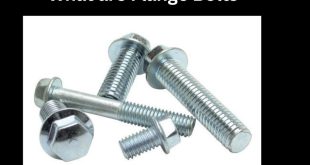The concept of house design has evolved significantly over the years, with sustainability and energy efficiency becoming key priorities for architects and homeowners. One innovative approach that embraces these priorities is Passive House design. At its core, Passive House focuses on reducing a building’s energy consumption by utilizing highly efficient construction techniques. One of the critical aspects of achieving this efficiency is framing. In Passive House design, the role of framing extends beyond structural integrity; it also serves as the foundation for thermal performance and airtightness. Let’s explore how innovative framing methods contribute to the overall effectiveness of Passive House design.
What Is Passive House Design
House design in a Passive House approach aims to create buildings that maintain comfortable temperatures with minimal energy use. It involves precise construction techniques to achieve airtightness, superior insulation, and efficient energy consumption. The goal is to keep energy needs so low that the house primarily relies on passive heat sources such as sunlight, occupants, and appliances.
Passive House design principles focus on five key elements: thermal insulation, high-performance windows, ventilation with heat recovery, airtight construction, and thermal bridge-free construction. Each of these principles relies heavily on effective framing to ensure the home meets strict energy efficiency standards.
Role of Framing in Passive
In traditional construction, framing serves the primary purpose of providing structural support. However, in Passive House design, framing plays an integral role in achieving energy efficiency and sustainability goals. The way a house is framed affects not only its structural integrity but also its thermal performance, airtightness, and ability to prevent thermal bridges.
Thermal Efficiency through Advanced Framing
The framing techniques used in house design significantly impact the overall thermal efficiency of a Passive House. In this design philosophy, framing is optimized to minimize heat loss by using advanced techniques like double-stud walls, staggered studs, and insulated headers. These methods enhance insulation and reduce thermal bridging, which is a common source of energy loss in standard home designs.
Double-Stud Framing: One common technique in Passive House design is double-stud framing. This method involves two parallel rows of studs with a gap in between that is filled with insulation. This layout reduces the amount of solid wood that spans the wall, effectively decreasing heat transfer and boosting the wall’s R-value, or resistance to heat flow.
Airtightness and the Role of Framing
One of the hallmarks of Passive House design is airtightness. Maintaining a high level of airtightness ensures that minimal heat escapes during winter or penetrates during summer, thus reducing the need for artificial heating or cooling. Framing techniques play a significant role in achieving this airtightness.
In Passive House construction, careful attention is paid to sealing the joints between framing members and around openings like doors and windows. Effective sealing techniques involve using airtight membranes and specialized tapes at critical framing junctions to create a continuous air barrier. This method prevents drafts and uncontrolled air leakage, which could undermine the energy efficiency of the house.
Reducing Thermal Bridges
A crucial goal in house design is to eliminate or reduce thermal bridges—areas where heat easily flows between the interior and exterior of the house. Poorly designed or uninsulated framing elements can create such bridges, leading to increased energy consumption and reduced comfort.
In Passive House design, framing methods focus on breaking these thermal bridges. This might involve using staggered studs or incorporating insulated sheathing on the exterior to create a continuous thermal barrier. Additionally, advanced framing techniques allow for more strategic placement of insulation, ensuring there are no gaps in the thermal envelope.
Structural Integrity Meets Energy Efficiency
While energy efficiency is a key focus, the framing in Passive House design must also meet structural requirements. To strike this balance, architects and builders often use engineered lumber and materials with high strength-to-weight ratios. These materials can support the building’s weight while allowing for deeper insulation cavities, improving the thermal performance of the walls and roof.
In locations like Los Angeles, where seismic activity is a concern, Passive House framing must also be designed to withstand earthquakes. For instance, a house framing design LA firm may combine the principles of Passive House design with local building codes to create homes that are both energy-efficient and earthquake-resistant.
Connection Between Framing and Windows
Windows are a critical component of house design, especially in Passive House construction. Framing supports the installation of high-performance windows, which are essential for maximizing natural light while minimizing heat loss. The window frames must be well-integrated into the overall wall structure to prevent air leaks and thermal bridges.
In Passive House design, window openings are meticulously planned, and the framing around them is reinforced with thermal breaks and insulation. This helps maintain the continuity of the thermal envelope and ensures that windows contribute positively to the building’s energy efficiency.
Incorporating Passive House Principles
Integrating Passive House principles into contemporary house design goes beyond simply applying advanced framing techniques. It involves a holistic approach to building design that includes optimizing orientation, planning for solar gains, and choosing materials that align with sustainability goals.
For example, individuals focused on holistic living, such as those who explore practices like Reiki Healing Online, often prioritize environmentally friendly and energy-efficient homes. A well-designed Passive House aligns with these values, promoting well-being, reducing the carbon footprint, and creating a comfortable living space with minimal environmental impact.
Why Framing Matters
As the demand for sustainable and energy-efficient house design grows, the framing techniques used in Passive House construction offer valuable insights into the future of home building. The careful planning and execution of framing in these designs demonstrate that it’s possible to achieve both energy efficiency and structural integrity without compromising aesthetics or comfort.
Framing is not just a structural element; it is a critical component of creating homes that are resilient, efficient, and comfortable. By prioritizing thermal efficiency, airtightness, and the elimination of thermal bridges, Passive House Framing sets the standard for what sustainable house design can achieve.
Conclusion
In the world of house design, Passive House construction has emerged as a gold standard for energy efficiency and sustainability. Framing plays a fundamental role in achieving these goals by providing the structural framework needed to support high-performance walls, windows, and roofs. Advanced framing techniques not only ensure the building’s integrity but also contribute to airtightness, reduce thermal bridges, and maximize insulation.
Whether you’re considering a new construction project or retrofitting an existing home, understanding the role of framing in Passive House design can guide you toward more energy-efficient and sustainable solutions. As homeowners and builders increasingly embrace these techniques, we can look forward to a future where sustainable and efficient house design is the norm rather than the exception.
 Daily Blogger News Stay updated with the latest trends and insights. Your reliable source for daily updates and information.
Daily Blogger News Stay updated with the latest trends and insights. Your reliable source for daily updates and information.







